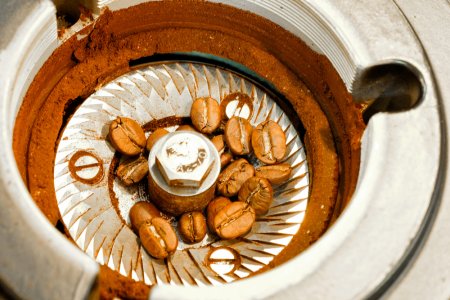Discover how your coffee grinder could ruin your morning brew
By
VanessaC
- Replies 0
When it comes to household chores, we often overlook certain items, believing their single-function nature would spare them from grime and contamination.
Though used strictly for grinding coffee beans, food residue inevitably builds up within coffee grinders, impacting the freshness and taste of your brew.
Coffee beans, while seemingly dry, contain natural oils that leave a residue over time.
This build-up, if left unchecked, can turn rancid and impair the flavour of your coffee, turning a morning delight into a daily disaster.
The frequency of cleaning depends on how often you use your grinder. Daily users should aim to clean their grinder every one to two weeks.
However, if you only use your grinder occasionally, it's ideal to clean it after each use.
Remember, if your coffee starts tasting unusual or bitter, consider it a clear signal that your grinder needs a good scrub.
Blade grinders need careful attention due to the oils sticking to their blades.
There’s a variety of cleaning methods available, from store-bought grinder cleaning tablets to the humble pantry staple, rice.
To clean, pour approximately a quarter-cup of rice (or cleaning tablet) into the hopper. Run the grinder until the rice is pulverised into a powder mimicking the texture of ground coffee.
Ensure the unit is unplugged before disposal of powder residue.
Once emptied, wipe out the remnants with a damp cloth or paper towel using plain water.
 Thoroughly wipe down both the inside and outside of the grinder and let it air-dry completely before utilising it again or storing it away.
Thoroughly wipe down both the inside and outside of the grinder and let it air-dry completely before utilising it again or storing it away.
On the other hand, the cleaning process for burr grinders is a bit more complex.
When cleaning a burr grinder, make sure to begin by carefully dismantling the machine. Refer to your owner’s manual for this procedure as it may require specific tools, like a screwdriver.
For each component, excluding the electrical parts, utilise a wet cloth or soapy water.
Remove any coffee residue from the burr, then wipe it with a dry cloth to absorb oil. Avoid dousing the burr itself with water to prevent rusting. If water usage is necessary, ensure full and immediate drying with a cloth.
After cleaning, allow every component to air-dry separately before starting the reassembling process.

Members, how often do you clean your coffee grinders? Let us know in the comments below!
Though used strictly for grinding coffee beans, food residue inevitably builds up within coffee grinders, impacting the freshness and taste of your brew.
Coffee beans, while seemingly dry, contain natural oils that leave a residue over time.
This build-up, if left unchecked, can turn rancid and impair the flavour of your coffee, turning a morning delight into a daily disaster.
The frequency of cleaning depends on how often you use your grinder. Daily users should aim to clean their grinder every one to two weeks.
However, if you only use your grinder occasionally, it's ideal to clean it after each use.
Remember, if your coffee starts tasting unusual or bitter, consider it a clear signal that your grinder needs a good scrub.
Blade grinders need careful attention due to the oils sticking to their blades.
There’s a variety of cleaning methods available, from store-bought grinder cleaning tablets to the humble pantry staple, rice.
To clean, pour approximately a quarter-cup of rice (or cleaning tablet) into the hopper. Run the grinder until the rice is pulverised into a powder mimicking the texture of ground coffee.
Ensure the unit is unplugged before disposal of powder residue.
Once emptied, wipe out the remnants with a damp cloth or paper towel using plain water.
Tip
Remember, blade grinders have electrical components and are not dishwasher-safe.
On the other hand, the cleaning process for burr grinders is a bit more complex.
When cleaning a burr grinder, make sure to begin by carefully dismantling the machine. Refer to your owner’s manual for this procedure as it may require specific tools, like a screwdriver.
For each component, excluding the electrical parts, utilise a wet cloth or soapy water.
Remove any coffee residue from the burr, then wipe it with a dry cloth to absorb oil. Avoid dousing the burr itself with water to prevent rusting. If water usage is necessary, ensure full and immediate drying with a cloth.
After cleaning, allow every component to air-dry separately before starting the reassembling process.
Key Takeaways
- Coffee grinders should be cleaned regularly to prevent the build-up of oils which can affect the taste of coffee.
- Blade coffee grinders can be cleaned with grinder cleaning tablets or rice, while burr grinders require disassembling and careful cleaning of each component.
- Regular cleaning is recommended at different intervals depending on how frequently the coffee grinder is used.
- It's important to ensure electrical parts do not get wet and that all parts are dry before being reassembled, used, or stored.
Last edited:









